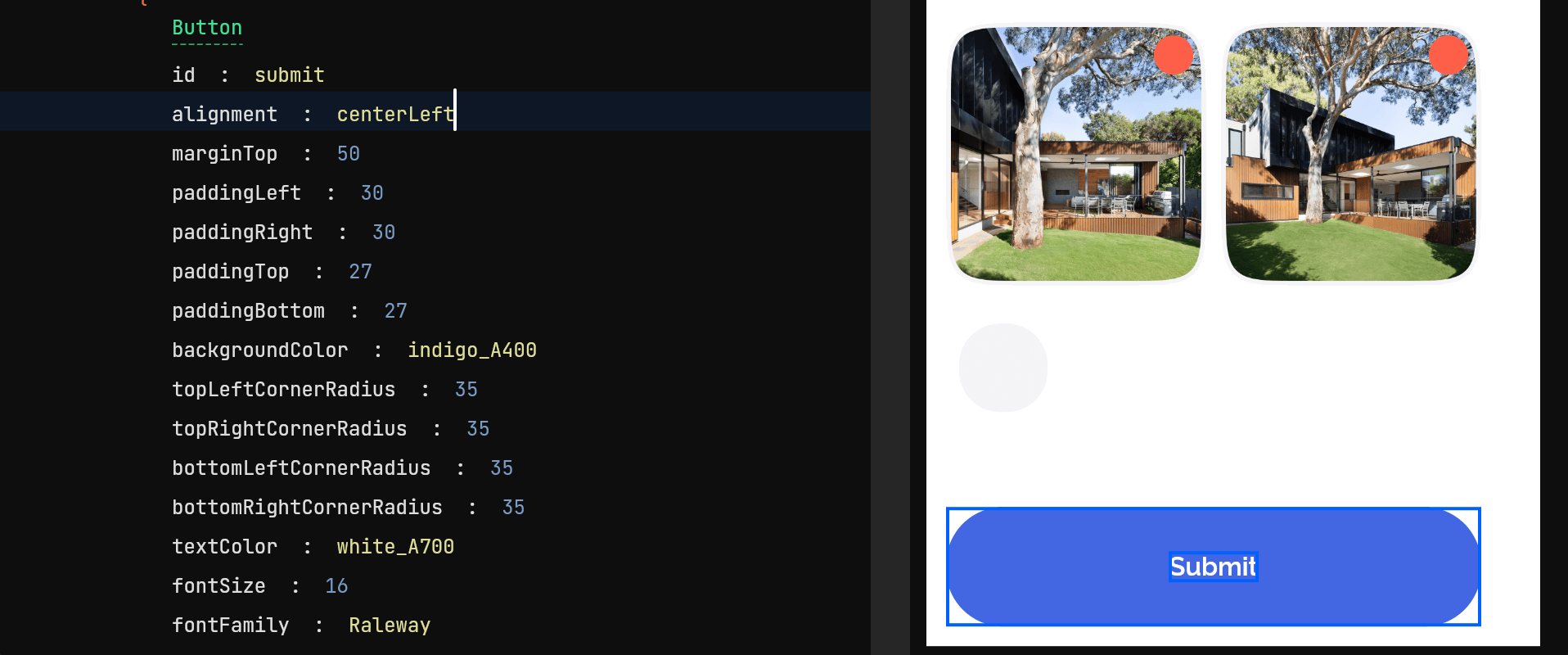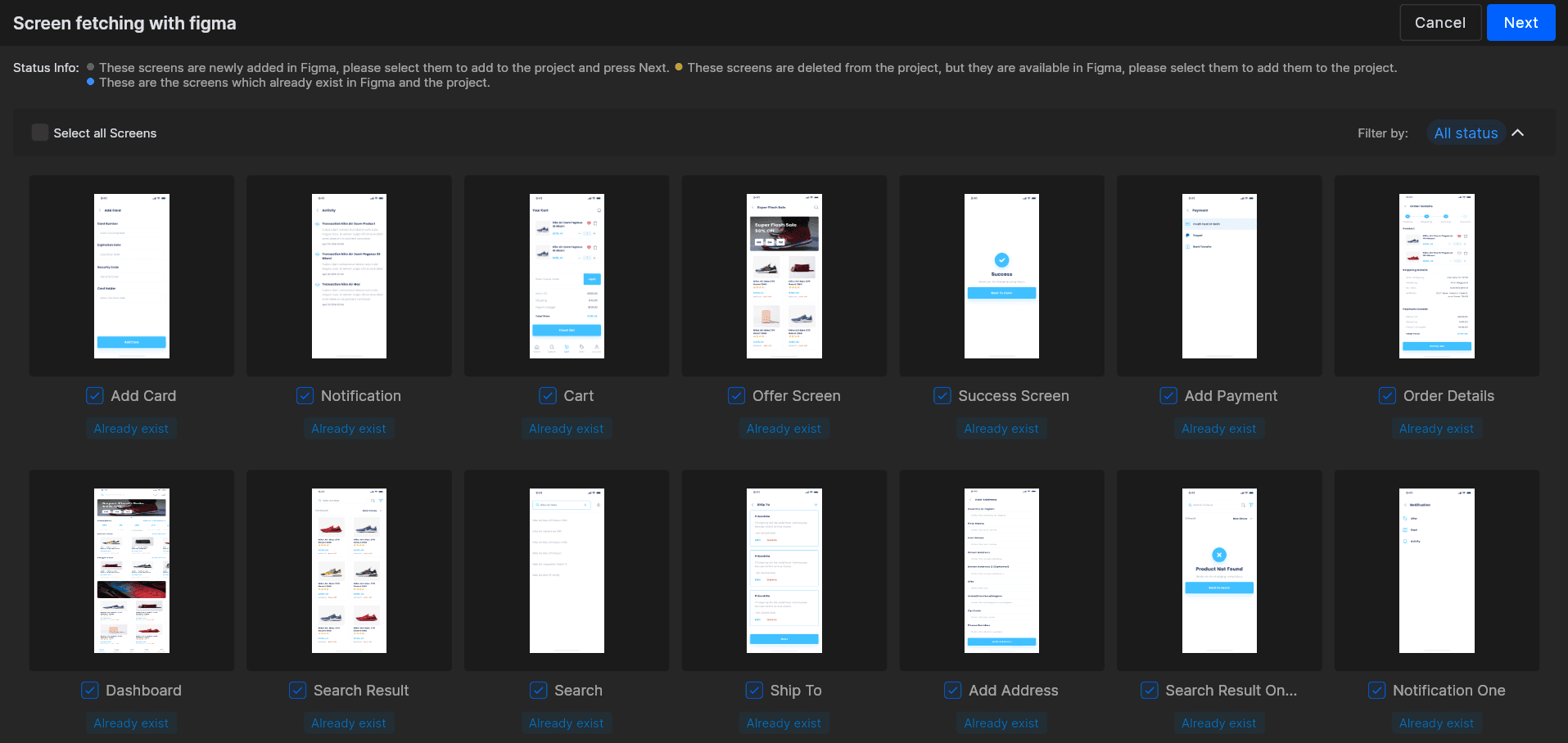
Design Converter
- Technologies
Flutter
React
Shopify
Android
iOS
Flutter
React
Shopify
Android
iOS
- Resource
University
Documentation
Templates
UI Accuracy
Discord
University
Documentation
Templates
UI Accuracy
Discord
- Pricing

Design Converter
Functionalities
Last updated on Sep 15, 2023
•5 mins read
Last updated on Aug 22, 2022
•5 mins read
Now, we are bringing to you even more enhancement and their advanced version, Version 2.0, for identifying the components and optimisation in the generated code for the UI design.
Using 200+ algorithms, DhiWise can understand any design and convert it into a valid design code. Every supported component identification is now improved which in turn identifies all your designs, so you can easily modify your app designs.
Previously in V1.0, our identification used to only work with the designs done using Groups and Rectangle. Now, DhiWise is capable to identify designs made using any Parent node, which means it supports designs done using Frames, Components, Boolean Operations(Union, Intersect, Subtract and Exclude), and even newly introduced Widgets support from Figma. Now, bring any app design, create your amazing app and the rest will be covered by DhiWise!
Learn more from our Design guidelines to follow DhiWise design standards and get all your application UI identified easily.
We managed to reduce the size of the code of a screen which was generated previously to half with our V1.0 algorithms.
Our identification algorithms are now powered with such an advancement that they auto-identify all your design clutters and remove them while you import your designs into DhiWise. This helps in generating optimised design code by removing unnecessary code views and giving better view hierarchy results, which helps to reduce code size.
We managed to reduce the size of the code of a screen which was generated previously to half with our V1.0 algorithms.
Our identification algorithms are now powered with such an advancement that they auto-identify all your design clutters and remove them while you import your designs into DhiWise. This helps in generating optimised design code by removing unnecessary code views and giving better view hierarchy results, which helps to reduce code size.
In V1.0, identification algorithms were incapable to manage the view hierarchy generation when the design was done with overlapping components or the design had Z-indexed components. For such designs, the view hierarchy was not generated in proper order, but now DhiWise handles the view hierarchy in a sorted manner. No matter how the design is being layered in Figma, our algorithms will manage all your design components in proper order.
DhiWise identifies all the UI components very smoothly ever since our first version. Now, it has extended its support for more components, so you have no chance to face issues and can smoothly build your application in DhiWise.

In case components are not identified, or it is not according to proper design guides, then tag that particular component. To learn more refer to Tagging Components in Figma doc.
DhiWise now also identifies all your icons from the design. It identifies icons and also gives them a name using which you can easily get familiar with your design. Icons designed using Fonts are also now identified and icon identification alo helps in auto-identifying the screen actions.

Using icon identification, the identification of components has been improved. For example, if the search icon is identified then it is effortless to identify SearchView on the app screen.
Read more from Auto Icon Detection doc.
You heard it right! Now Actions are automatically set on your app screens. Based on the icon detected on the screen, action is set in the app screen and the related code is also generated in the app code. This saves your time now even more and so you can focus on your meaningful tasks.
Read out the Auto Action Setup doc to know which actions are supported and much more.

New components are added to the list of supported components in the auto-identification feature of DhiWise. Components like ChipView , ExpandableList , Slider and SearchView are now included.
For React developers, we have some great news! We now have Storybook integration with the help of which a developer can visualise their complete design components and can preview them. It allows us, the developers, to create and test components in isolation. It runs outside of the app, too, so project dependencies won't affect the behaviour of components.
Read out Storybook Integration to learn how you can set up it in your React application.
Many times during the app development process, there are many design changes and modifications made to the design. To get those changes reflected in your app in DhiWise, Figma Refresh comes in to help you with that.
Figma refresh avoids the need of switching back to Figma designs and instead lets you get all your changes right here in your DhiWise application.
Refer to Figma Refresh doc to know more about it.

Auto identification of components has been an amazing feature in DhiWise . Our advanced algorithms help you identify all your designs in one go, and now they are even more powerful with new supported components and enhancements.
Tired of manually designing screens, coding on weekends, and technical debt? Let DhiWise handle it for you!
You can build an e-commerce store, healthcare app, portfolio, blogging website, social media or admin panel right away. Use our library of 40+ pre-built free templates to create your first application using DhiWise.